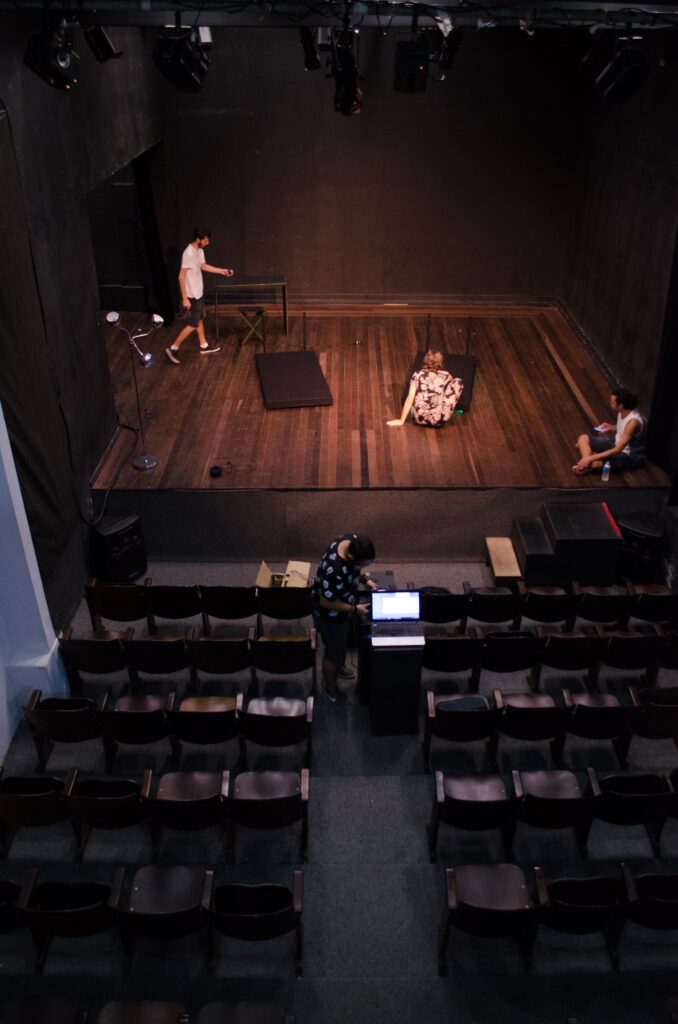What Kind of Editing Does My Work Need?
There are different kinds of professional editing, and each has its own place in the process from concept to finished product. What kind of editing do you need?
Awen Rowan-Nelson
Lorem ipsum dolor sit amet, consectetur adipiscing elit. Ut elit tellus, luctus nec ullamcorper mattis, pulvinar dapibus leo.
Before I begin to help you answer that question, I want to eliminate an area of potential confusion, particularly if you are comparing the services of different editors or businesses that offer editing services. You see, the terminology in the world of editing is not standardized. What one editor may call “content editing,” for example, another may call “substantive editing” or “line editing.” For this reason, I will explain the types of editing that we offer at RowanWood Writing Services below, and list the individual services that we include in each type of editing.
Choosing an Appropriate Level of Editing
In order to make an informed decision regarding the type or types of editing that a particular work requires, a writer or business must understand the types of editing available to them, at what stage in the writing process each type is both necessary and appropriate, and what is included in each type of editing. So below, I will provide you with all of the information necessary for you to make an informed, considered, and confident decision.
Editing Services Offered by RowanWood Writing:
- Developmental Editing
- Content & Stylistic Editing
- Copyediting
- Proofreading
The Four Types of Editing and Which One is Right for You:
Developmental Editing (also called structural editing, evaluation editing, comprehensive editing):
 Developmental Editing focuses on the big picture, and it is usually the first step in the editing process. It is particularly valuable when a writer is new, or has taken on a new kind of project, or simply wants to be sure that the structure of the draft is sound before progressing further. It takes place when the writer has completed a first draft, and it is not the kind of editing that pops into most people’s mind when they think about editing their work. For example, it does not focus on errors in grammar, or sentence structure, or spelling, or even on such things as fact checking or eliminating jargon and clichés. Instead, it focuses on the overall structure, organization, and content of the work, and it makes sure that the writer is presenting themselves, their area of expertise, their brand, their business, or their product according to their vision for the work, and in the best way possible to bring that vision to life in a polished work. You see, whether or not a writer is fully aware of it, the structure, organization, and content of a work are telling a story, making an argument, or creating an overall impression that can be just as important to the success of the work as the details, the facts, or the quality of the writing.
Developmental Editing focuses on the big picture, and it is usually the first step in the editing process. It is particularly valuable when a writer is new, or has taken on a new kind of project, or simply wants to be sure that the structure of the draft is sound before progressing further. It takes place when the writer has completed a first draft, and it is not the kind of editing that pops into most people’s mind when they think about editing their work. For example, it does not focus on errors in grammar, or sentence structure, or spelling, or even on such things as fact checking or eliminating jargon and clichés. Instead, it focuses on the overall structure, organization, and content of the work, and it makes sure that the writer is presenting themselves, their area of expertise, their brand, their business, or their product according to their vision for the work, and in the best way possible to bring that vision to life in a polished work. You see, whether or not a writer is fully aware of it, the structure, organization, and content of a work are telling a story, making an argument, or creating an overall impression that can be just as important to the success of the work as the details, the facts, or the quality of the writing.
Developmental Editing includes:
- Evaluating the overall structure of the work with its intended audience in mind.
- Restructuring, reorganizing, reordering, and revising the work as a whole.
- Reordering chapters; suggesting additional chapters, the elimination of chapters, or the consolidation of chapters.
- Recommending that certain sections be expanded and/or that others be reduced or eliminated altogether.
- Revising or reframing material that would be better presented in another form (e.g., in an appendix or footnote, or on a web page).
- Improving the flow, clarity, and quality of the work as a whole.
- Writing additional original content.
- Determining whether permissions are necessary for third-person work.
- Suggesting the addition of, or suggesting changes to, such things as indexes, glossaries, appendices, or bibliographies
- Checking the structural elements of the piece in accordance with a style guide.
Content & Stylistic Editing (also called substantive editing or line editing.
At RowanWood Writing Services, we include line editing in content and stylistic editing):
 Whereas developmental editing focuses on the big picture and on the overall structure of the work, content and stylistic editing focuses on the text itself with an eye to improving the flow, clarity, consistency, persuasiveness, tone, and voice of the work, and to ensuring that the work is appropriate for its target audience. In a sense, content & stylistic editing is the bridge between editing the work as a whole (developmental editing) and editing individual sentences and words for such things as errors in grammar, spelling, and punctuation (copyediting).
Whereas developmental editing focuses on the big picture and on the overall structure of the work, content and stylistic editing focuses on the text itself with an eye to improving the flow, clarity, consistency, persuasiveness, tone, and voice of the work, and to ensuring that the work is appropriate for its target audience. In a sense, content & stylistic editing is the bridge between editing the work as a whole (developmental editing) and editing individual sentences and words for such things as errors in grammar, spelling, and punctuation (copyediting).
Content & Stylistic Editing includes:
- Improving the flow, clarity, and consistency of the text.
- Restructuring paragraphs and sentences.
- Maintaining a consistent tone, mood, style, and voice.
- Correcting run-on sentences, poor transitions, poor word choices, and potentially or obviously offensive words or sentences.
- Improving clarity and concision by replacing excessive wordiness with tight, clear, and comprehensive prose.
- Eliminating jargon, clichés, euphemisms, hostages to fortune, and ineffective or distracting idiosyncratic language.
- Maintaining consistency and continuity of details, including such things as names, dates, relationships, titles, anachronisms, etc..
- Maintaining the language level appropriate for the target audience, medium, and purpose.
- Evaluating argumentation. This includes evaluating the structure of arguments, as well as the quality of the evidence and examples; suggesting additional examples or evidence; revising incomplete or unconvincing arguments; and replacing inappropriate, incomplete, or unconvincing arguments with fully developed, well supported ones.
- Fact checking.
- Checking for plagiarism (which is often entirely unintentional on the part of the writer!).
- Evaluating citations and bibliography for consistency with style guide.
- Evaluating tables and graphs for accuracy and consistency.
- Evaluating indexes for completeness.
Copyediting:
Copyediting takes place only when a manuscript is complete and as clean as the writer can possibly make it. This does not mean a manuscript that is “nearly finished” or one that “needs only a few tweaks here and there.” Instead, this type of editing is reserved for a manuscript that needs neither developmental editing nor content/stylistic/line editing.
Think of it this way: let’s say that developmental editing is determining the stage upon which a performance will take place and the people who will oversee all of the various elements of the production. These people might include a Director, Stage Manager, Scenic Manager, Sound Designer or Music Director, Choreographer, Lighting Designer and Technicians, Costume Designer, Make-up Artists, Hair Stylists, and so forth.

Further, let us say that content/stylistic editing includes hiring of all the behind-the-scenes technicians, artists, designers, craftspeople, etc.; the design, creation, placement, and set-up of the props, scene by scene; the placement of the lights and the precise ways in which they will be used during the performance, scene by scene; the acquisition and placement of the sound system, and/or the hiring of well-trained, experienced, and reliable musicians; determining the location of the musicians and/or sound system during the performance; choosing the music that will be performed or played during the performance, as well as all of the other sound effects, scene by scene; the design, purchase, or creation of the costumes, scene by scene; the choice of hair styles and make-up, scene by scene, and, of course, the hiring of well-trained, experienced, and reliable actors; making changes to the script, as necessary, both in cooperation with the script writers and in accordance with the expectations of the target audience; and scheduling, coordinating, and carrying out all of the rehearsals, in concert with the producer, director, theater director, all of the various directors, designers, technicians, actors, musicians, and so forth mentioned above.
At this point, with all of the structural and stylistic elements in place, and the content fully developed, organized, and performance-ready, we arrive at the point of copyediting. At this stage, it is the job of the copyeditor in our analogy to ensure that the script, the music, and the lines are all original; the references to people, places, years, characters, locations, and so forth are all consistent; every fact is accurate; the level of the language used by each character remains both consistent and believable for that character throughout the performance; all references, jokes, or anachronisms that will be either misunderstood by or entirely unfamiliar to the audience have been adequately corrected or eliminated; all persuasive arguments are convincing; the humor works; the grammar of each spoken line is correct; all necessary improvements to the flow of the performance have been made; the condition and fit of the costumes are exactly as they should be; every instrument is properly tuned; the voices and the dancers are adequately warmed up prior to the performance; and so forth. In other words, the copyeditor in our analogy must make any and all corrections necessary to ensure that the performance will be error-free, polished, accurate, and enjoyable before it is brought before an audience.
With written text, the focus of copyediting is the nitty-gritty of every sentence and every word.
Copyediting includes:
- Correcting grammar, usage, spelling, punctuation, typos, extra spaces, repeated words.
- Making sure that the text is accurate, consistent, clear, and concise.
- Changing a passive voice to an active voice
Final editing for word choice, sentence structure, examples, and instructions. - Maintaining the flow of the text whenever a change is made.
- Checking any facts that still appear questionable.
- Maintaining adherence to the chosen style guide.
- Editing indexes, bibliographies, and appendices in accordance with the chosen style guide.
- Editing tables, lists, figures.
- Converting measurements, when necessary.
- Editing front matter, back matter, and cover copy.
- Checking web links.
- Catching any and all errors missed by the writer and previous edits.
Because many writers are more familiar with copyediting than with some of the other types of editing, they can be too quick to request that professional editors merely copyedit their work.

However, think about it this way: without a stage, actors, a script, a director, scenery and props, music, lighting, and so forth, a performance isdoomed to failure. In like manner, a written text that is error-free, but without a developed and organized structure, and without prose that does its job well—be it to convince, educate, inspire, advise, entertain, or sell—is just as likely to fail. This is why starting with copyediting may be skipping over steps that are critical to the success of the work. After all, not every dancer is a choreographer, and not every writer is an editor. In fact, very few writers are professional editors. So, in deciding which kind of editing your work needs, begin by being ruthlessly honest with yourself. If this is your third publication of the same general kind, you probably know the ropes. If it is your first, however, you are far less likely to notice everything that needs to be done prior to reaching the copyediting stage to ensure that you have a professional, polished, and publishable work.
Proofreading:
Proofreading is the final step before publication, and it is done only after a work has been designed, formatted, and printed. The work is now called a “proof.” Proofreading, then, is the final defense against errors, and it takes place right before publication. Because the work has been designed and formatted, however, a proofreader does more than check the text one final time for minor errors in spelling, punctuation, and so forth. Proofreading also focuses on the design and layout.
Proofreading includes noting or correcting:
- Minor errors in the text such as any remaining errors in spelling, grammar, and punctuation.
- Errors in cross-referencing; page numbers; placement or numbering of footnotes or endnotes; placement of tables, figures, sidebars, and headings; noting poor line or page breaks.
- Errors introduced by the printer (at times by checking the proof against the final, copyedited text).
- Minor errors in the index, bibliography, appendix, or glossary.
- Any and all errors missed by both the author and the copyeditor
